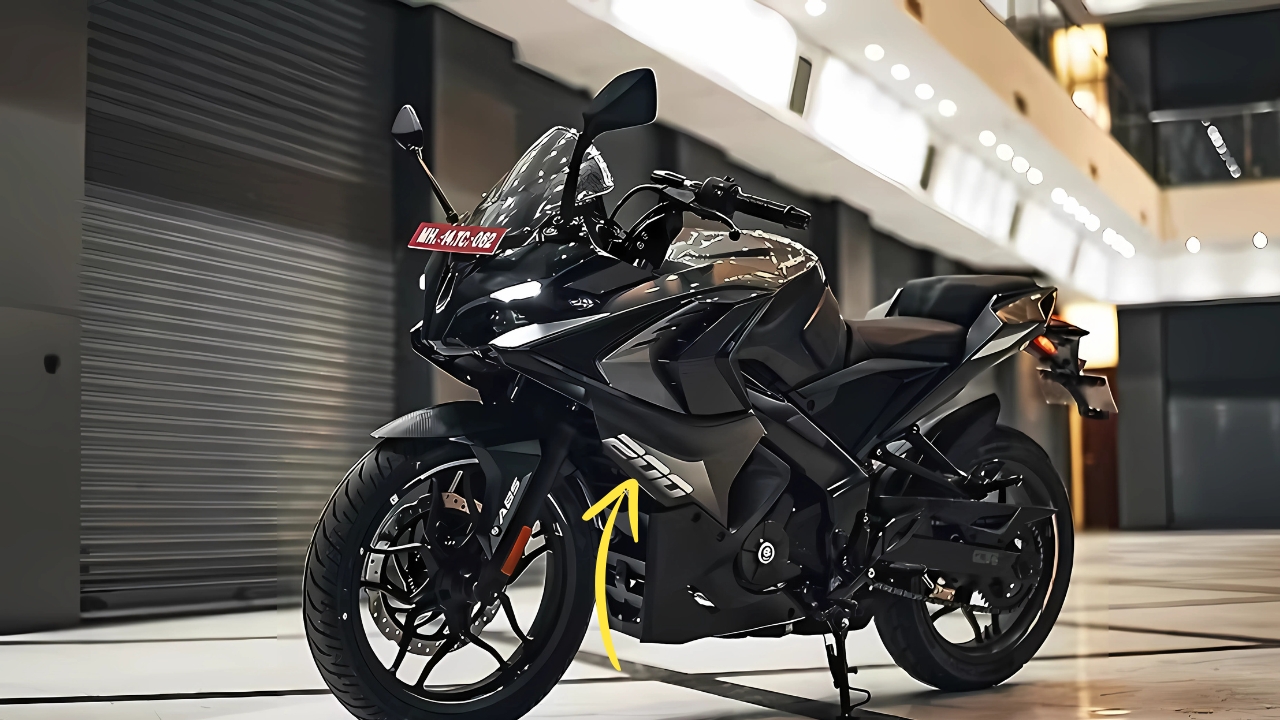Bajaj Pulsar RS 200: The democratization of performance motorcycling in India has followed a fascinating trajectory, with manufacturers striving to deliver increasingly sophisticated machines at price points accessible to enthusiastic yet budget-constrained riders.
The Bajaj Pulsar RS 200 represents a particularly interesting chapter in this evolution – a fully-faired sports motorcycle that brought genuine performance capabilities to a segment previously dominated by commuter-focused machines with sporting pretensions.
Having recently spent two weeks with this motorcycle during an extended riding trip through the Western Ghats, I’ve developed distinct impressions about where it continues to impress and where the platform’s age has begun to show.
Bajaj Pulsar RS 200: Historical Context Understanding the RS 200’s Impact
To properly evaluate the current RS 200, one must first acknowledge its historical significance within both Bajaj’s lineup and the broader Indian motorcycle landscape.
Introduced in 2015 as the most performance-oriented offering in the then-decade-old Pulsar family, the RS 200 represented Bajaj’s first serious foray into the fully-faired sports segment dominated by international brands.
Its combination of relatively sophisticated engineering, distinctive styling, and accessible pricing created a compelling proposition that expanded the performance envelope available to young Indian riders.
The subsequent years have seen remarkably few fundamental changes to the platform, with updates primarily focused on emissions compliance, color schemes, and minor feature enhancements rather than comprehensive redesigns.
This evolutionary approach reflects both the fundamental soundness of the original engineering and the challenges of maintaining multiple distinct platforms in a highly price-sensitive market segment.
Design Language: Distinctive Approach
The RS 200’s exterior design remains perhaps its most polarizing aspect, embracing an aesthetic approach that diverges significantly from the clean, minimalist lines typical of many sports motorcycles.
The front fairing incorporates multiple angular panels, layered surfaces, and dual projector headlamps that create a visually complex face.
This busy approach continues throughout the bodywork, with numerous cuts, scoops, and character lines that communicate aggression through complexity rather than simplicity.
During my time with the motorcycle in various riding environments, this distinctive styling consistently generated attention and sparked conversations with other motorcyclists.
The “Racing Red” color scheme of my test unit further enhanced its visual presence, with contrasting graphics that emphasize the dynamic surfacing.
While some riders criticized the design as excessive, its ability to stand out in a crowded marketplace represents a marketing advantage that more conservative approaches might lack.
The full fairing provides reasonable wind protection during highway stretches, directing airflow around the rider’s chest while creating minimal buffeting at the helmet level.
The relatively upright ergonomics position the windscreen at an effective height for riders of average stature, though taller individuals might find themselves looking over rather than through the screen during aggressive riding postures.
What impresses most about the design after seven years in production is its continued distinctiveness – unlike many competitors that quickly appear dated as design trends evolve, the RS 200’s unique approach has aged into a recognizable identity that stands apart from both older and newer alternatives.
This visual longevity creates a lasting brand identity that transcends the normal styling cycles typical of the segment.
Performance Dynamics: Accessible Capability
The heart of the RS 200 experience remains its 199.5cc liquid-cooled single-cylinder engine, producing approximately 24.5 horsepower at 9,750 rpm and 18.7 Nm of torque at 8,000 rpm.
These figures might appear modest compared to larger displacement alternatives, but the engine’s character delivers accessible performance that proves particularly well-suited to Indian riding conditions.
The power delivery exhibits a progressive character that builds linearly rather than arriving in an intimidating surge, creating confidence for less experienced riders while still rewarding more aggressive throttle application.
The six-speed transmission offers precise shifts with well-defined gates, though requires more deliberate action than the slick gearboxes found in some Japanese alternatives. The clutch action remains reasonably light even during extended urban riding, reducing fatigue during congested traffic situations.
During my extended testing through the challenging roads of the Western Ghats, the performance envelope proved remarkably well-matched to the environment.
The midrange-focused power delivery provided accessible drive out of tight corners without requiring constant gearbox attention, while the top-end offers enough excitement to satisfy enthusiastic riding without becoming unmanageable.
The engine’s refinement impresses for a single-cylinder design, with minimal vibration at cruising speeds and a mechanical soundtrack that communicates sportiness without becoming tiresome during longer journeys.
Fuel efficiency remains another strength, with my mixed riding returning approximately 35 km/l despite including significant portions of enthusiastic mountain riding.
This economic operation significantly enhances the motorcycle’s practicality for riders who must balance performance desires with financial realities – a consideration that remains relevant for many in the target demographic.
Handling Characteristics: Balanced Composure
The RS 200’s chassis dynamics reflect thoughtful calibration for its intended purpose and environment.
The perimeter frame provides good torsional rigidity while the suspension – conventional telescopic forks up front and a Nitrox monoshock rear – delivers a well-judged balance between compliance and control.
During aggressive mountain riding, the chassis communicated approaching limits with progressive feedback rather than sudden transitions, inspiring confidence even when pushed beyond casual riding speeds.
At 165 kg with a full fuel tank, the RS 200 occupies a sweet spot that balances stability with agility. The motorcycle changes direction willingly without requiring excessive input, yet maintains composure during high-speed sweepers without the nervousness sometimes exhibited by lighter machines.
The MRF Zapper tires fitted to my test unit delivered reasonable grip across varied surfaces, though showed limitations during particularly aggressive cornering or sudden direction changes – an area where more premium rubber would enhance the capable chassis.
Braking performance from the 300mm front and 230mm rear discs provides adequate stopping power, with the single-channel ABS system preventing front wheel lockup during aggressive applications.
The non-ABS rear allows for controlled sliding when desired, creating a reasonable compromise between safety and rider control that suits the motorcycle’s sporting intentions.
Lever feel remains somewhat wooden compared to more premium systems, requiring deliberate application rather than the precise modulation possible with higher-specification components.
Ergonomic Considerations: Versatile Positioning
The RS 200’s riding position represents one of its most thoughtful elements, striking an effective balance between sporting capability and everyday comfort.
The relatively upright handlebar position reduces wrist pressure during urban riding, while still allowing an engaged riding posture when attacking corners.
The seat-to-footpeg relationship creates reasonable legroom for average-height riders while maintaining enough ground clearance for enthusiastic cornering.
During my extended testing through varied environments, this ergonomic compromise proved particularly well-suited to Indian riding conditions.
Multi-hour highway stretches remained comfortable enough to avoid significant fatigue, while the riding position still facilitated active weight transfer during technical mountain sections.
The seat padding density strikes a reasonable balance between initial comfort and longer-term support, though some riders might seek aftermarket options for truly long-distance touring.
Wind protection from the full fairing creates a relatively calm pocket for the rider’s torso, while leaving the helmet in clean airflow to reduce neck strain at highway speeds.
This partial protection represents an effective compromise for the Indian climate, where complete wind isolation could become uncomfortably warm during summer conditions.
Ownership Considerations: Practical Performance
The RS 200’s value proposition extends beyond its performance capabilities to encompass practical ownership considerations.
Bajaj’s extensive service network ensures maintenance support virtually anywhere in India, while parts availability and relatively straightforward engineering keep ongoing costs reasonable compared to more exotic alternatives.
Reliability has proven a particular strength, with the platform demonstrating impressive durability even under enthusiastic usage.
During conversations with long-term owners throughout my testing period, consistent themes emerged around dependable operation with minimal unscheduled maintenance – a critical consideration for riders who depend on their motorcycles for daily transportation alongside weekend enthusiasm.
The 13-liter fuel tank provides adequate range for most riding scenarios, enabling approximately 450 kilometers between refueling during moderate usage.
This practical consideration enhances the motorcycle’s versatility for both commuting duties and weekend escapes, creating a genuine do-everything capability that justifies the “everyday sportbike” positioning.
Bajaj Pulsar RS 200: Enduring Relevance
The Bajaj Pulsar RS 200 ultimately succeeds through a carefully calibrated balance between performance capability, practical usability, and accessible pricing.
While newer competitors may offer incremental improvements in specific areas, the RS 200’s thoughtful engineering and distinctive character continue to create a compelling overall package that transcends its aging platform.
For riders seeking an engaging sports motorcycle experience without stretching to premium international brands, the RS 200 offers a genuine performance capability wrapped in distinctive styling that stands apart from more generic alternatives.
In maintaining this balanced approach rather than chasing specification extremes, Bajaj has created an enduring motorcycle that remains relevant even as the market continues to evolve around it.

